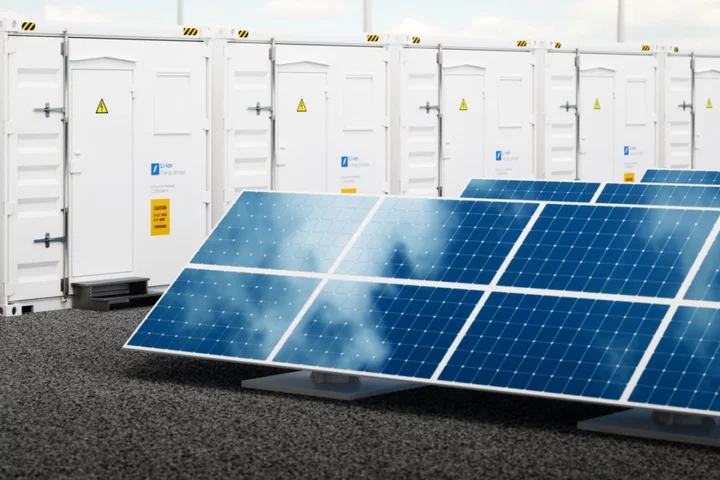Artificial intelligence is helping engineers build solar panels out of a “miracle material”. Scientists have long been excited about the possibility of new perovskite tandem solar cells, which could help bring the vastly improved efficiency of perovskite to mass production. They have an efficiency of more than 33 per cent, dramatically higher than conventional silicon solar cells. Those tandem solar cells come with a host of other benefits, too. They rely on inexpensive raw materials and can be made relatively easily. Engineers have faced a problem, however, in making them cheaply and at scale. To make them efficient, manufacturers need to make a very thin, high-grade layer of perovskite. Doing that is difficult. It relies on a complex process that varies significantly, seemingly with little explanation. Trying to improve that process has often relied on a gradual process of trying out new possibilities through trial and error. Now scientists have successfully built a new system that uses artificial intelligence to try and work out how to build those layers better. Instead of picking through video recordings to work out how different layers work, researchers were able to train a computer system to spot the hidden signs of good and bad coatings. After the system was built, it was able to be used better understand how to change the production to make it more efficient, researchers said. “These are extremely exciting results,” said Ulrich W Paetzold, a researcher from the Karlsruhe Institute of Technology, who worked on the new study. “Thanks to the combined use of AI, we have a solid clue and know which parameters need to be changed in the first place to improve production. “Now we are able to conduct our experiments in a more targeted way and are no longer forced to look blindfolded for the needle in a haystack. This is a blueprint for follow-up research that also applies to many other aspects of energy research and materials science.” An article describing the breakthrough, ‘Discovering Process Dynamics for Scalable Perovskite Solar Cell Manufacturing with Explainable AI’, is published in Advanced Materials. Read More Tiny solar-powered van unveiled in Japan Solar panel world record smashed with ‘miracle material’ ‘We let you down’: Peloton apologises for Thanksgiving ride
Artificial intelligence is helping engineers build solar panels out of a “miracle material”.
Scientists have long been excited about the possibility of new perovskite tandem solar cells, which could help bring the vastly improved efficiency of perovskite to mass production. They have an efficiency of more than 33 per cent, dramatically higher than conventional silicon solar cells.
Those tandem solar cells come with a host of other benefits, too. They rely on inexpensive raw materials and can be made relatively easily.
Engineers have faced a problem, however, in making them cheaply and at scale. To make them efficient, manufacturers need to make a very thin, high-grade layer of perovskite.
Doing that is difficult. It relies on a complex process that varies significantly, seemingly with little explanation.
Trying to improve that process has often relied on a gradual process of trying out new possibilities through trial and error.
Now scientists have successfully built a new system that uses artificial intelligence to try and work out how to build those layers better. Instead of picking through video recordings to work out how different layers work, researchers were able to train a computer system to spot the hidden signs of good and bad coatings.
After the system was built, it was able to be used better understand how to change the production to make it more efficient, researchers said.
“These are extremely exciting results,” said Ulrich W Paetzold, a researcher from the Karlsruhe Institute of Technology, who worked on the new study. “Thanks to the combined use of AI, we have a solid clue and know which parameters need to be changed in the first place to improve production.
“Now we are able to conduct our experiments in a more targeted way and are no longer forced to look blindfolded for the needle in a haystack. This is a blueprint for follow-up research that also applies to many other aspects of energy research and materials science.”
An article describing the breakthrough, ‘Discovering Process Dynamics for Scalable Perovskite Solar Cell Manufacturing with Explainable AI’, is published in Advanced Materials.
Read More
Tiny solar-powered van unveiled in Japan
Solar panel world record smashed with ‘miracle material’
‘We let you down’: Peloton apologises for Thanksgiving ride









